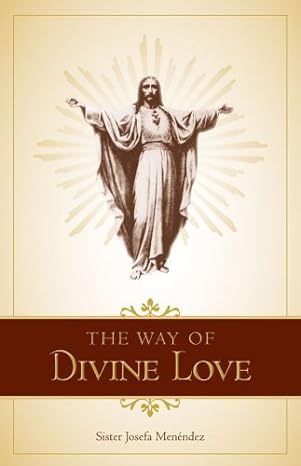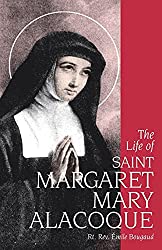
The little church in the process of desecration or ‘wreckovation’, as I discovered it. Since then it appears that the statues have been taken away and the walls now stripped of imagery have been “tastefully” painted in a bland monochrome.
We have noted that before the Second Vatican Council, devotion to the Sacred Heart formed a prominent, even defining part of Catholicism. The imagery of the Sacred Heart seemed almost omnipresent in many arenas of Tridentine Catholicism.
Tridentine Catholicism – this is to say: the epoch of Catholicism after the Middle Ages, after the Council of Trent and lasting until the Vatican Council of the 1960’s.
It was the epoch in which the Catholic Church attempted to continue the Christian Order of previous ages and not surrender its mysteries and treasures to what it regarded as wave upon wave of iconoclasm.
It was also the era where the Catholic Church was scorned, banned and persecuted in the Protestant countries.
Iconoclasm implies the destruction of images. And it is not insignificant or accidental that the new forms of Protestant and Secular mentality that arose at this time were scathing towards what they deemed the syrupy sentimentalism of Catholic imagery: The coloured, plaster statues, the scapulars and medals, the imagery of the Sacred and Immaculate Hearts.
All of this was frequently mocked by the new mindset, which arose at this time.
Tears for Montceaux L’Etoile and its ‘Wreckovation’
Indeed it is exactly this same kind of mentality, which has now taken over the Catholic Church in the wake of Vatican II. Many modern Catholics now are embarrassed by the imagery around the Hearts of Jesus and Mary. Countless statues have been removed from churches, vast tracts of decor eradicated.
Here I should like to interpolate a tribute – along with my tears. It is a tribute to the ravaged spirit of Montceaux l’Etoile. And what is Montceaux l’Etoile? It is a little village in France, not far from Paray-le-Monial.

And in this village, I wandered in to find a little Romanesque church, decorated to the hilt in the very kind of imagery, which has now been deemed unfashionable to modern Catholics and Protestants alike. Decorated to the hilt – this is to say that the walls and ceiling were covered with beautiful imagery, beloved by Catholics of an earlier era.
It was in all possibility the most lovely village church that I have ever seen. In all these walls so lovingly embellished, I felt totally surrounded and held in the traditional piety of Tridentine French Catholicism – held as though I were in a womb. It was a deeply moving experience.
Sometime later, I would return to that little church of Montceaux l’Etoile. I wanted in fact to take photos of the piety, which had so stirred my heart.
I was too late.
The Church was in full process of “Wreckovation.” All the decor had been stripped from the walls. The statues were still there, though soon to be removed. You can if you wish see the now bare walls, free of statues at this site here.
A “learned” woman from the locality explained to me that the Nineteenth Century style of the church represented “dégénérescence” – degeneration.
Now the walls of the village church would be stripped, apparently in the hope of reflecting an earlier age, thought to be more austere and which (I strongly imagine) was less embarrassing to her and to whoever had joined her in supporting this plan.
My heart wept – and weeps still – for the destruction wreaked upon this humble place of piety.
Piety – may I frankly declare that I cannot imagine that the desecraters of Montceaux l’Etoile knew much if anything at all about the humble piety, which had so lovingly adorned their church in previous centuries?
May I frankly declare that I imagine the desecraters were filled – more or less – with a psuedo-astheticism, which imagines itself as filled with culture and refinement and which sneers at such piety as “degeneration”?
May I frankly declare that France today seems filled with such an attitude – all taste and manners and rationalism – which is the clear (and dry, very dry) heir to the spirit of the French Enlightenment and Revolution?
Of course, it is not simply France. There seems to be a widespread feeling of superiority everywhere these days – that we cannot bear to be this “juvenile”.
Can we not be a little more acceptable to our seperated Protestant brethren? Or perhaps we can use Orthodox imagery, instead of Catholic? Anything is preferable – anything that is not so embarrassingly sweet and sentimental …
And yet what is such embarrassment in the end, if not – pride? And pride is at the very heart of the Fall. I cannot help but declare it: with the removal of so much of the Catholic imagery of the Tridentine era, we have suffered tremendously.
Now we tend to either do without Catholic imagery like Protestants or to employ “tasteful” Orthodox images instead.
Was there something childlike in earlier Tridentine images? Perhaps, but is there not something legitimately childlike in all of us – even into old age?
Does this inner child within each of us, not deserve that which continues to give comfort and consolation – if we are not too proud to admit it?
Perhaps the images of Our Lady and Our Lord from an earlier epoch console the child in all of us, who never stops looking to a Mother or a Comforter? Have we become too pompous to admit such aspects of our psyche? If so, what pettiness!
This is not to say that there is not such a thing as kitsch. And certainly, there is Catholic kitsch.
Ironically, such Catholic kitsch seems to me to have principally arisen in the post-Vatican II era. We have now truly kitschy cartoons of Christ looking more like Bugs Bunny than Our Lord.
And I must admit that the statues that nowadays fill the shops at sites like Lourdes and many internet sites as well, look kitsch to me. These modern statues ape their Tridentine predecessors, yet lack the sincerity of an earlier age.
For my part, I feel called to ponder deeply the Apparitions concerning both the Sacred and Immaculate Hearts in the Tridentine Era – these apparitions which called for Images of Their Hearts. And I feel called to ponder the message that this imagery brings benediction.
And I feel called to ponder this, as well: that before Vatican II, the Catholic world was replete with these images. But then began the decline. The pictures disappeared. The statues came down. Undoubtedly many more stained glass windows would have been scrapped, had they not cost so much to replace.
Now if Our Lord promised an increase in benediction through the spread of this image of His Sacred Heart, is it not logical to assume a decrease now in benediction?
In any event, there are yet other aspects to the imagery of the Sacred Heart. For in France, it was to assume counter-revolutionary significance …
Foreword for Monarchy by Roger Buck
Note: This series was originally to be continued. I am not sure it will be completed in a formal sense now. However, the ideas in it have been developed in many further posts at this site in labels like Architecture or Sacred Heart.
Also: for those who may be interested, there is an important book concerned with church wreckovation: Ugly as Sin: Why They Changed Our Churches from Sacred Places to Meeting Spaces … by Michael S. Rose. The book contains many insights into the modern need to make churches conform to a bland, non-embarrassing and ultimately non-Catholic ethos. I have a review here of Ugly as Sin – as well as few of my own reflections on this tragedy and how to respond to it .
Series Guide: This is the first of four published parts. Here are links to all parts of the series:
- Symbols and Imagery in the Sacred Heart Devotion Part 1: Origins
- Symbols and Imagery in the Sacred Heart Devotion Part 2: St. Margaret Mary Alacoque
- Symbols and Imagery in the Sacred Heart Devotion Part 3: On the Edge of Modernity
- Symbols and Imagery in the Sacred Heart Devotion Part 4: In Tridentine Catholicism
Buying Books at Amazon Through These Links Gives Us a Commission. This Supports Our Apostolate. Thank You if You Can Help Us Like This!












Comments
comments are currently closed
2 responses to “Symbols and Imagery in the Sacred Heart Devotion —Part 4: In Tridentine Catholicism”
Hi Roger,
Have you any information on the history of a movement in Ireland to include the Sacred Heart symbol on the Irish tricolor? It adorned the coffin of the patriot Cathal Brugha when he was buried but I have never seen any other reference in Ireland to it. Would greatly appreciate any info.
Thanks.
Simon – it is especially gratifying for me to receive this particular enquiry.
For I am on the very same search myself!
I have fleetingly mentioned the Sacred Heart on the Irish tricolour in my book extract in the Articles section.
But my reference is only fleeting, because my knowledge is still limited here.
I found reference to this in Mary Kenny’s Goodbye to Catholic Ireland. Unfortunately I cannot locate the page or pages now as I am in the midst of a move and the book is packed away. I will contact you when I have them.
That being said I know that Mary Kenny had access to old Irish periodicals, including the Messenger of the Sacred Heart.
I suspect that if you could gain access to the Messenger circa 1921-22 …
Please let me know if you do! Or find anything else relevant. Your quest is my quest, as I say.
Meanwhile, I shall be googling Cathal Brugha …
Ireland … what a nation!!
Again thank you for this most gratifying comment.